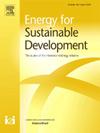Decoupling carbon emissions, economic growth, and health costs toward carbon neutrality in China's regions
IF 4.9
2区 工程技术
Q2 ENERGY & FUELS
引用次数: 0
Abstract
In response to climate change, understanding regional and sectoral carbon emissions is essential for guiding China's low-carbon transition. This study analyzes carbon emission trends across provinces and industries in China from 2006 to 2020, covering the 11th to 13th Five-Year Plan (FYP) periods. Using the Logarithmic Mean Divisia Index (LMDI) method and Tapio decoupling model, we identify key emission drivers and decoupling patterns. Results reveal significant regional disparities: carbon emissions in the Northwest increased by 55 % during the 12th FYP and 46 % in the 13th FYP, reaching 380 million tons, while the Beijing-Tianjin region saw only an 8 % increase and achieved strong decoupling in the 13th FYP. Economic growth remains the main driver of emissions, particularly in the Central and Northern Coast regions, whereas energy intensity and industrial restructuring play important mitigating roles. The share of health expenditures in GDP rose from 4.7 % to 7.1 %, with the Northwest region peaking at 9.1 %, indicating links between emissions and health costs. The findings offer practical insights for region-specific policy design, including energy structure optimization, technological upgrading, and public health considerations.
中国地区碳排放、经济增长和健康成本向碳中和的解耦
在应对气候变化的过程中,了解区域和行业的碳排放对于指导中国的低碳转型至关重要。本研究分析了2006 - 2020年“十一五”至“十三五”期间中国各省份和行业的碳排放趋势。利用对数平均分度指数(LMDI)方法和Tapio解耦模型,确定了关键的排放驱动因素和解耦模式。结果显示了显著的区域差异:西北地区的碳排放量在“十二五”期间增长了55%,“十三五”期间增长了46%,达到3.8亿吨,而京津冀地区在“十三五”期间仅增长了8%,实现了强脱钩。经济增长仍然是排放的主要驱动力,特别是在中部和北部沿海地区,而能源强度和工业结构调整发挥了重要的缓解作用。卫生支出占国内生产总值的比例从4.7%上升到7.1%,西北地区达到9.1%的峰值,表明排放与卫生成本之间存在联系。研究结果为区域政策设计提供了实用见解,包括能源结构优化、技术升级和公共卫生考虑。
本文章由计算机程序翻译,如有差异,请以英文原文为准。
求助全文
约1分钟内获得全文
求助全文
来源期刊

Energy for Sustainable Development
ENERGY & FUELS-ENERGY & FUELS
CiteScore
8.10
自引率
9.10%
发文量
187
审稿时长
6-12 weeks
期刊介绍:
Published on behalf of the International Energy Initiative, Energy for Sustainable Development is the journal for decision makers, managers, consultants, policy makers, planners and researchers in both government and non-government organizations. It publishes original research and reviews about energy in developing countries, sustainable development, energy resources, technologies, policies and interactions.
 求助内容:
求助内容: 应助结果提醒方式:
应助结果提醒方式:


